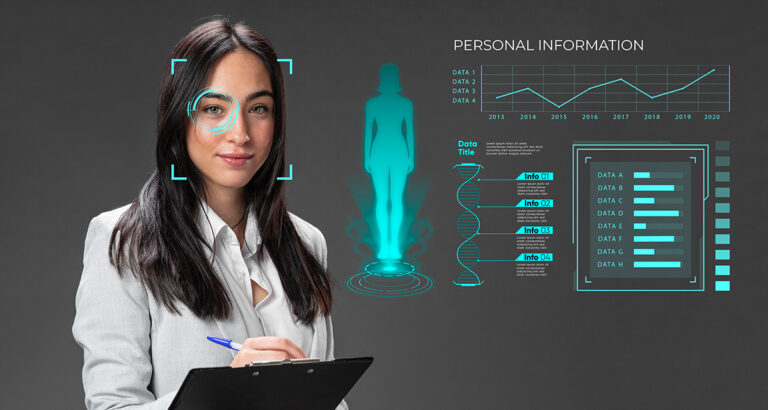Bioelectronic medicine is rapidly emerging as a transformative domain that sits at the intersection of neuroscience, immunology, electrical engineering, and digital health. As our understanding of the nervous system deepens—not just in terms of anatomy and physiology, but also as a controller of systemic health—a compelling new paradigm is taking shape: one in which diseases are diagnosed, treated, and even prevented through precise neuromodulation. This article provides a comprehensive review of bioelectronic medicine, its scientific foundations, mechanisms, current and future clinical applications, and the implications for physicians globally.
The Nervous System as a Therapeutic Target
Traditionally, clinical interventions have been largely pharmacological or surgical. However, the nervous system—the body’s master control network—offers an underutilized therapeutic entry point. Comprising the central, peripheral, and autonomic divisions, the nervous system governs nearly all physiological processes, from metabolism and inflammation to cardiac rhythm and gut motility. It is also capable of rapid adaptation through plasticity, enabling feedback-based treatment models.
What distinguishes bioelectronic medicine is its intent to precisely modulate these neural circuits using targeted electrical impulses. Unlike systemic medications, which often act diffusely and carry risks of off-target effects, bioelectronic interventions can be localized, reversible, and adaptive. They capitalize on the body’s endogenous control mechanisms, often leveraging reflex arcs or feedback loops to restore homeostasis.
Molecular and Neural Mechanisms
The foundational science of bioelectronic medicine involves both neurophysiology and molecular biology. One of the most seminal discoveries in the field has been the identification of the “inflammatory reflex”—a neural circuit that regulates immune responses. This reflex is primarily mediated by the vagus nerve, which senses inflammatory signals and responds by dampening cytokine production in the spleen and other organs via acetylcholine-mediated pathways. Studies have demonstrated that electrical stimulation of the vagus nerve can inhibit the release of tumor necrosis factor-alpha (TNF-α), a key cytokine in inflammatory diseases such as rheumatoid arthritis and inflammatory bowel disease. These findings opened the door to interventions that control immune function without immunosuppressive drugs.

Other circuits are being explored for different purposes. For example, the carotid sinus nerve is a promising target for modulating blood pressure, while sacral nerve stimulation has been shown to benefit patients with refractory bladder dysfunction. In epilepsy, real-time cortical feedback systems can detect abnormal electrical activity and deliver corrective impulses, reducing seizure frequency and severity. The use of closed-loop systems—devices that both monitor and respond to physiological parameters—is expanding. These systems represent a fusion of neurostimulation and digital health, employing algorithms to personalize stimulation patterns in real time.
The Evolution of Bioelectronic Medicine: From Pacing to Precision
The origins of bioelectronic medicine lie in one of medicine’s most dramatic intersections with engineering: the invention of the pacemaker. In the mid-20th century, physicians and electrical engineers collaborated to deliver the first implantable pacemakers, transforming cardiac care by restoring life-sustaining rhythms. These early devices represented the foundational principle of bioelectronic medicine—electrical modulation of physiological function—and remain iconic symbols of how technology can restore homeostasis through targeted intervention. Yet, while pacemakers and defibrillators addressed specific dysfunctions in cardiac conduction, they were fundamentally open-loop systems: the devices delivered electrical stimuli irrespective of feedback from the body. As technologies matured and understanding of neurophysiology deepened, the field transitioned into closed-loop systems, where real-time biofeedback—via sensors, electrophysiological monitoring, or biochemical indicators—could dynamically adjust stimulation parameters. Deep brain stimulation (DBS) for Parkinson’s disease marked a pivotal step. By targeting subcortical nuclei with adjustable impulses, physicians could modulate tremors, rigidity, and bradykinesia with increasing precision. Over time, DBS also found utility in treatment-resistant depression, obsessive-compulsive disorder, and dystonia.
The last two decades witnessed a further transformation: a conceptual shift from mere symptom suppression to systemic regulation of disease processes. The discovery of the inflammatory reflex by Kevin Tracey and colleagues catalyzed this change. Their work demonstrated that the vagus nerve could downregulate cytokine production via a cholinergic anti-inflammatory pathway—suggesting that inflammation, long seen as a chemical phenomenon, could be modulated electrically. This reframing of neuroimmune interaction inspired the broader field of bioelectronic medicine as we know it today, in which devices target peripheral nerves to treat chronic diseases such as rheumatoid arthritis, Crohn’s disease, and even type 2 diabetes.
Today, the evolution continues at the confluence of data science, neural engineering, and molecular biology. Miniaturized electrodes, AI-powered signal processing, and biocompatible interfaces allow for finer resolution, adaptive control, and patient-specific modulation. In parallel, innovations in wearable electronics and ingestible sensors promise a future where bioelectronic interfaces become not only therapeutic but also diagnostic, predictive, and preventive.
Current and Emerging Clinical Applications
One of the most prominent clinical applications of bioelectronic medicine is in the management of epilepsy. Responsive neurostimulation (RNS) devices, such as the NeuroPace system, detect abnormal cortical activity and deliver corrective electrical pulses, reducing the incidence and severity of seizures. These systems are often used in patients who are refractory to pharmacotherapy and not candidates for resective surgery. Another well-established application is vagus nerve stimulation (VNS) in treatment-resistant depression. Though the mechanisms remain partially understood, VNS appears to modulate mood-regulating circuits within the limbic system and improve neuroplasticity over time.
Cardiologists are exploring baroreceptor activation therapy (BAT) to treat resistant hypertension and heart failure. Devices implanted near the carotid sinus stimulate afferent fibers that modulate sympathetic tone and promote vasodilation, reducing blood pressure and cardiac workload.
In gastroenterology, sacral nerve stimulation has demonstrated efficacy in treating fecal incontinence and constipation, while gastric electrical stimulation is being explored for gastroparesis. Urologists are also investigating tibial nerve stimulation for overactive bladder. Pain medicine has seen significant advancements through spinal cord stimulation (SCS), dorsal root ganglion (DRG) stimulation, and peripheral nerve stimulation (PNS), offering options for patients with chronic neuropathic pain who are unresponsive to standard therapies. More experimental yet promising applications include modulation of the splenic nerve to control autoimmune diseases and stimulation of the trigeminal nerve to improve cognitive performance in Alzheimer’s disease.
The Future Pipeline: Trials, Startups, and Disruptive Devices
Several promising innovations are currently undergoing preclinical or clinical validation. The most notable pipeline includes devices targeting the autonomic nervous system, particularly the vagus nerve, for systemic diseases. SetPoint Medical, for instance, has developed a miniaturized vagus nerve stimulator that fits into a capsule-sized implant and is undergoing phase II trials for rheumatoid arthritis and Crohn’s disease. Preliminary data show not only symptom relief but also a marked reduction in systemic inflammatory markers, such as TNF-α and IL-6, suggesting disease-modifying potential.
In the metabolic space, Galvani Bioelectronics—a joint venture between GSK and Verily (Alphabet Inc.)—is developing peripheral nerve modulators aimed at improving insulin sensitivity in type 2 diabetes. Their devices target the hepatic branch of the vagus nerve, modulating gluconeogenesis and insulin signaling pathways. Early-stage animal data showed promise, and first-in-human trials are underway in select centers.
Another emerging area is closed-loop neuromodulation for epilepsy. Devices such as NeuroPace’s RNS System not only detect abnormal cortical activity but also deliver real-time stimulation to prevent seizure generalization. These systems function more like internal neurophysiologists than simple stimulators, and recent updates to their algorithms now allow for machine learning-based seizure prediction models, making them increasingly autonomous over time.

On the more futuristic end, teams are exploring bioelectronic implants that interact with the enteric nervous system to treat conditions like irritable bowel syndrome and gastroparesis. Some research groups are also working on electroceutical tattoos and epidermal electronics that adhere to the skin and deliver painless transcutaneous stimulation to regulate autonomic function or manage chronic pain without pharmacotherapy. Even psychiatric disorders are being re-examined through a bioelectronic lens. The StimScience team at UC Berkeley has been testing a wearable headband that modulates gamma oscillations during sleep to reduce symptoms of depression and PTSD. Meanwhile, NIH’s BRAIN Initiative is supporting projects that map functional neural circuits in greater detail to unlock novel targets for future devices.
As we peer ahead, the most profound shift may be the integration of bioelectronic devices with omics-based data—genomics, proteomics, metabolomics—and wearable biometric inputs to create hybrid platforms that both diagnose and modulate in real time. Such systems could theoretically evolve into “digital reflex arcs,” functioning as artificial extensions of our nervous and immune systems.
Challenges to Implementation: Science, Systems, and Skepticism
Despite its promise, the field of bioelectronic medicine faces significant hurdles before widespread adoption. Some are technological; others are clinical, regulatory, or even philosophical. From a scientific standpoint, the human nervous system’s complexity is daunting. Unlike pharmaceutical agents that diffuse through known biochemical pathways, electrical signals interact with intricate neural circuits, where spatial resolution and stimulation parameters can mean the difference between benefit and harm. Accurately targeting the right nerve fibers—afferent vs. efferent, myelinated vs. unmyelinated—remains a major challenge, especially when working with mixed-function nerves like the vagus.
Additionally, patient variability in nerve anatomy, inflammatory tone, and autonomic balance makes standardization difficult. Personalized mapping protocols, possibly using AI, may be required in the future to tailor stimulation regimens. Moreover, our understanding of long-term effects—particularly neuroplastic changes, immune adaptation, or unintended modulation of adjacent systems—is still evolving. Clinically, another obstacle is the lack of robust, large-scale randomized trials. While initial studies show promise, many are small and lack long-term follow-up. Regulatory bodies such as the FDA and EMA require not just efficacy but also proof of safety, durability, and cost-effectiveness. For implantable devices, the bar is especially high due to potential surgical risks and device malfunction concerns.
Reimbursement is another limiting factor. Many health systems and insurance providers are not yet equipped to assess the value of bioelectronic therapies within existing frameworks. Unlike pharmacological treatments, which fit into well-defined formularies and cost models, these devices often sit at the intersection of medical, surgical, and digital care, making them difficult to categorize or fund. This ambiguity hampers innovation, especially in resource-constrained settings.
Training is an emerging need. Most practicing physicians, especially outside of neurology or surgery, are not trained to think in terms of neural circuits, stimulation parameters, or closed-loop dynamics. As such, bioelectronic therapies risk becoming confined to niche academic centers unless accompanied by deliberate medical education efforts.
Finally, some skepticism persists—justified or otherwise. For a profession historically rooted in biochemistry and physiology, the idea of treating systemic inflammation or psychiatric illness with “electrical zaps” can evoke caution. Concerns about over-hyping, as seen in past tech-driven health revolutions, add to the need for careful communication grounded in rigorous evidence.
A Glimpse Into Tomorrow’s Clinic
The integration of bioelectronic medicine into clinical practice is not an if, but a when. As devices become smaller, smarter, and more intuitive, their applications will transcend current boundaries. What is today confined to specialized centers may soon become part of routine outpatient care.
Imagine a patient with type 2 diabetes wearing a vagal stimulator linked to their glucose monitor, with the system auto-adjusting to postprandial spikes. Or a patient with asthma receiving pulsed nerve modulation to prevent inflammatory flares, monitored remotely through a secure clinical dashboard. These are not distant hypotheticals—they are under active development. For physicians, this shift demands both curiosity and adaptability. Understanding bioelectronic mechanisms, knowing when to refer for device evaluation, and staying abreast of trial data will be essential. Collaborative care models involving neurologists, immunologists, and technologists may become more common.
Most importantly, bioelectronic medicine signals a return to systems thinking. It reminds us that the body is an integrated network—not merely a sum of parts—and that healing can emerge from restoring communication within it. As this frontier unfolds, the clinician’s role will remain pivotal: to interpret, personalize, and guide the application of these powerful new tools in the service of human health.





